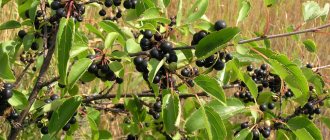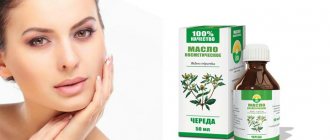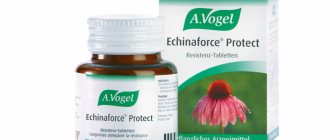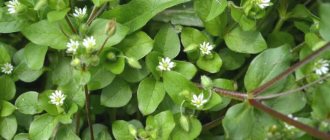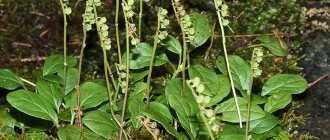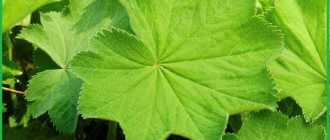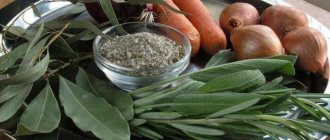This wonderful plant is also called nigella, nigella sativa and kalonji. It grows in South and South-West Asia. Black cumin seeds were found in the tomb of Pharaoh Tutankhamun in Egypt. In ancient times, nigella was already cultivated by Jews, Arabs and Indians. Now it is grown all over the world. Black cumin seeds, which have a pleasant nutty taste, are used as a seasoning in various national cuisines. Nigella should not be confused with true cumin (cuminum cyminum), black pepper, black sesame or black cogosh.
Medicinal properties of black cumin
Besides cooking, Nigella sativa also has many medicinal uses. The seeds have been used in traditional medicine in the Middle East as a natural remedy for ailments ranging from abscesses to herpes zoster for over 2,000 years. The Quran mentions that the Prophet Muhammad said: “This black seed cures all diseases except death.”
Composition of black cumin (per 100 g)
- Manganese (8.53 mg)
- Copper (2.6 mg)
- Iron (9.7 mg)
- Lipids (31.16 g)
- Phosphorus (543 mg)
- Magnesium (265 mg)
- Calcium (about 570 mg)
- Zinc (6.23 mg)
- Protein (22.8 g)
- Potassium (808 mg)
- Dietary fiber (6.03 g)
- Sodium (17.6 mg)
“Most of the therapeutic properties of black cumin seeds are due to the presence of the phytonutrient thymoquinone, which is the main bioactive component (30-48%), as well as thymohydroquinone and thymol,” says Josh Axe, DND, co-founder of Ancient Nutrition Supplement. “These substances have pronounced antioxidant and anti-inflammatory properties.”
Oil prepared from black cumin seeds also has unique healing properties.
Chemical composition of the plant
The composition of the fruits of caraway seeds includes:
- fixed oils;
- essential oils;
- flavonoids;
- coumarins;
- tannins;
- proteins.
The chemical content of an essential oil varies depending on the stage of plant development. The basis of the essential oil is the terpenoid carvone - up to 60%. Another 30% comes from D-limonene, a hydrocarbon of the terpene group.
The residues are distributed among organic alcohols, flavonoids, and carbohydrates. The substance carvacrol is responsible for the characteristic aroma.
Helps fight cancer
Due to its powerful phytochemical and antioxidant properties, black seed oil has been shown to help treat cancer. Croatian scientists evaluated the antitumor activity of thymoquinone and thymohydroquinone in an animal study and found that these substances contained in nigella oil helped reduce tumor cells by 52%. Research in recent years also shows that thymoquinone helps induce apoptosis (programmed cell death) in leukemia, breast and brain cancer cells. Additionally, researchers from the Sidney Kimmel Cancer Center at Jefferson Health found that black cumin seeds help treat and prevent pancreatic cancer. The antitumor activity of black cumin is explained by its high anti-inflammatory properties.
Promotes Liver Health
The liver is one of the most important organs in the body. Almost all toxins pass through the liver. Bile is needed to digest fats. Black cumin is useful for those who have poor liver function due to side effects from taking medications, alcohol abuse, and illness. In a recent study on laboratory animals, scientists found that black seed oil improves liver function and helps prevent damage and disease to this important organ.
Procurement of raw materials
The seeds ripen from July to September. To harvest caraway seeds, umbrellas are cut from the stems and laid out in a well-ventilated place for ripening. The fruits must be completely dry and when you try to shake the umbrella, they fall off it.
Shake off the seeds, collect, spread in a thin layer for additional drying. Then place in glass or ceramic containers with tight lids.
To obtain essential oil, the fruits are crushed and steam distilled
Helps you lose weight
According to the Journal of Diabetes and Metabolic Disorders, black seed is one of the most bioactive natural remedies on the planet. There is also a large body of research showing that taking nigella supplements can help lower body mass index and reduce waist circumference. It is also important to note that none of the studies reported serious side effects from the use of such drugs.
Use in folk medicine
- In folk medicine, the fruits of the plant are believed to be useful for treating asthma. Preparations based on the plant calm the heartbeat, improve digestion of food, prevent vomiting, and have a diuretic effect.
- A decoction of the fruit eliminates pain and cramping in the stomach and kills some types of worms. In Central Asia, healers recommend that people who want to gain weight should generously flavor their food with caraway seeds.
- Brewed tea from the whole plant, including the roots, is useful for diabetes.
- Cumin is used in veterinary medicine as a remedy against bloating, colic, and also normalizes fermentation processes in animals.
Protects skin
In a study conducted by Iranian scientists, nigella products were found to be as effective as pharmaceutical drugs for treating eczema. “At the same time, no serious side effects were observed, unless, of course, there is individual intolerance,” says Josch Ax. “While dermatological ointments and creams can cause swelling on the skin and in the larynx, tingling in the mouth, chest discomfort, difficulty breathing, changes in skin tone, pigmentation, and bruises.”
Application in medicine
Photo: Yandex.Pictures
In scientific medicine, the fruits are used as an aphrodisiac for intestinal atony. As an antimicrobial agent to reduce fermentation processes in the intestines, as a carminative for flatulence.
- The drugs are used for intestinal colic, accumulation of gases, chronic and atonic constipation, as a gastric remedy to increase the secretory function of the digestive glands.
- An infusion of fruits is prescribed to stimulate appetite. Cumin is believed to stimulate milk production in nursing mothers.
- The fruits also have a slight choleretic effect, but are inferior in this indicator to cumin, volodushka and tansy.
- The fruits are included in many infusions and teas for various diseases of the gastrointestinal tract.
Good for hair
Black cumin oil is not only a good natural remedy for skin care, but also for hair. Nigella contains nigellon, which research has shown to have antihistamine properties. The oil from this plant can help with hair loss due to androgenic alopecia and alopecia areata. Possessing antioxidant, antibacterial and anti-inflammatory properties, Nigellon also improves the overall condition of the hair and scalp, preventing dandruff and dryness.
Description
The herbaceous annual of the Umbrella family has other names - green cumin, cumin, caraway seeds. The plant is found everywhere, but its homeland is the steppe regions of the Caucasus and Crimea.
Having already spread, under the influence of climatic conditions and many other reasons, common cumin was transformed into other subspecies. Examples include wild anise, German cumin, and Mediterranean fennel.
Cumin is cultivated to produce valuable essential oil. The product is produced for export in Germany, Holland, and Poland. For your own needs - in many other countries
The spice is very popular among gardeners. The aromatic fruits of caraway seeds are added to many vegetable preparations.
The ideal substrate is a mixture of sand and black soil. The best place is well-lit areas.
Improves fertility
According to one study, black cumin is an effective remedy for improving male fertility. In one study, scientists found that taking nigella oil has a beneficial effect on the quality and volume of sperm - the number of sperm increases and their motility improves. There are also a number of studies that have shown that black cumin has a positive effect on sex hormones.
For what diseases is the product indicated for children? Can it be used on newborns?
In a family with a baby, cumin seeds can replace many medications. If you prepare a special decoction, you can use it to do enemas for bloating, colic or constipation. The following tricky recipe will help you cope with otitis in a child: cut out a cube in the upper part of the onion head, make a hole with a knife, pour a teaspoon of seeds into it, and cover with the cut out part of the onion. Such an onion is baked, and while it is still hot, the juice is squeezed out. A few drops are instilled into the ear and covered with cotton wool. This should be done twice a day.
We also recommend: Flax seed for women
Let us remind you that any experiments with your health, and even more so with the health of a small child, using folk remedies should only be carried out with the permission of a specialist who will tell you whether there are contraindications and advise on the optimal dosage specifically for your baby.
How to use black cumin
There are many ways to use nigella seeds and oil. “The oil can help with some skin problems, such as acne and eczema, due to its antibacterial and anti-inflammatory properties,” says Josh Axe. - It is also considered useful for psoriasis and rosacea. If you are using black seed oil topically, always dilute it with a few teaspoons of a carrier oil, say coconut or almond. Nigella oil can be added to homemade massage oils and lotions. For a warming massage, simply add one drop to one tablespoon of carrier oil. To improve the health of your hair and scalp, it is recommended to add a few drops of oil to your shampoo and conditioner.”
Thanks to its spicy flavor, high-quality black cumin seed oil can be used in all types of recipes, from main meat dishes to soups. You can also add it to drinks such as lattes, teas, cocktails.
There are biological supplements with black cumin in the form of capsules. What dose is considered optimal? It all depends on the individual characteristics of the body and state of health. As a rule, experts recommend the following amount.
- For diabetes: 1 g of black cumin seed powder twice a day for 12 months.
- For high blood pressure: 0.5-2g black cumin seed powder daily for 12 weeks or 100-200ml oil twice daily for eight weeks.
- To improve sperm quality: 2.5 ml of nigella oil twice a day for two months.
- For asthma: 2 g of ground black cumin seeds for 12 weeks. Alternatively, take 15 ml/kg of black cumin seed extract daily for three months.
Seed selection
The seeds of this crop contain a high level of beneficial essential oils. These components slow down the germination rate. Soaking the planting material for 6 hours in cool water will help increase the number of entries.
To prevent anise seeds from spoiling in water, they are soaked using a soft cloth. Thus, 1 part of the plant element will be immersed in water, and the other will be in contact with air.
Soaking in liquid without the use of additional materials can cause the seed to rot in the soil.
After this time, the planting material is placed on dry paper and dried until the moisture has completely evaporated. After this, it can be used for sowing in open ground.
Possible side effects
Some people may be intolerant to black cumin. When used externally, it can manifest itself as an allergic rash. Side effects when taken orally include: upset stomach, vomiting, or constipation.
Before using black seed oil topically on your skin and hair, it is recommended that you do a test to ensure you do not have a negative reaction to the product. Avoid contact of oil with eyes and mucous membranes when using.
Consult your physician before using black seed oil if you are pregnant, nursing, currently taking any medications, or have a chronic medical condition such as diabetes, hypotension, or a bleeding disorder. If you are taking black seed oil and are scheduled for surgery, it is recommended that you stop taking it at least two weeks before surgery.
As with all natural oils, be sure to store black seed oil away from heat and light.
Botanical description
The plant is characterized by a straight single stem, strongly branched at the top. The height of individual specimens reaches 1.5 m. The root is without numerous shoots, fleshy, cylindrical in shape.
The lance-shaped leaves are dissected into thin, sharp lobes. The length of each leaf reaches 20 cm, width - 10 cm. The lower the leaf is located on the stem, the longer the petiole. The upper leaves have short petioles.
The inflorescences are umbellate, located at the top and ends of the branches. The flowers are inconspicuous, white. The total diameter of the inflorescences reaches 8 cm.
The fruits of caraway seeds are two-seeded, flattened, dry to the touch. The two semi-fruits are the well-known seeds, which when rubbed produce a characteristic spicy odor.
